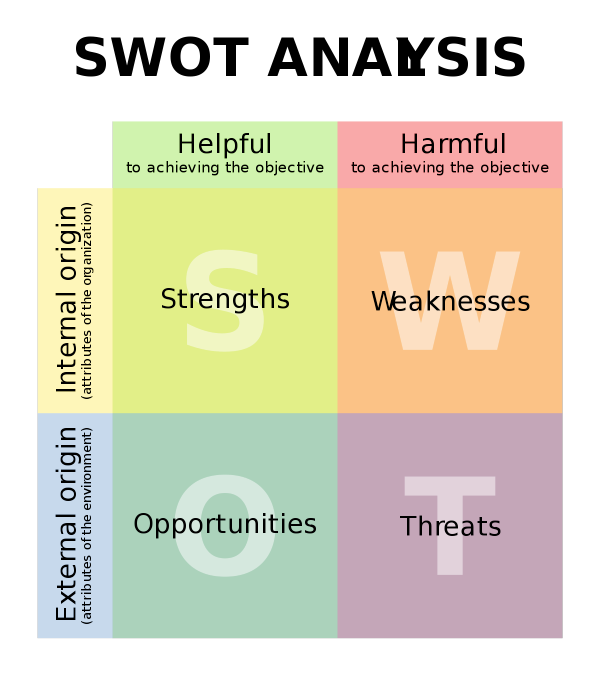How to Do a SWOT Analysis

A SWOT Analysis, also known as SWOT Matrix, is a tool which allows you to study a company’s situation. It can also be used on institutions, projects, or people. Also, it analyzes internal characteristics as well as external situations. This tool lets you know the real conditions in which an organization is in. It also allows you to plan a strategy for the future.
When undertaking a SWOT analysis, it’s necessary to keep in mind what it will offer us: a balance of forces. The weaknesses and threats will be on one side. The strengths and opportunities will be on the other. We should also keep in mind that a SWOT analysis is solely a static model of the situation at a point in time. As such, it’s not something that lasts a long time. It’s modifiable according to the circumstances.
When doing a SWOT Analysis, the first thing to do is select a target that you want to analyze. It can be a company, an institution, a project, or even a person. Once the target is selected, you will perform an internal analysis before the external one. The data obtained will be introduced in a matrix. This matrix will allow you to evaluate the situation of the analyzed object and make good decisions.

Internal analysis
During the internal SWOT analysis, you have to consider two factors: strengths and weaknesses. Strengths are those attributes that provide an advantage. If we’re analyzing a company, we’ll need to analyze the availability of capital resources. We will also analyze the employees, the assets, the quality of the product, among others. This will allow you to see if they are strengths that allow the company to gain a competitive advantage over its competitors.
On the other hand, weaknesses include anything that hinders or limits the company. They can be energy resources, abilities, or attitudes. Weaknesses are only internal problems. They must be identified and eliminated.
External analysis
An organization or a person can’t exist outside of its surrounding environment. The internal SWOT analysis would not be complete. It doesn’t explain how the target relates to its exterior. Because of that, the next step is to make an external analysis. It will help you discover what the opportunities and threats are within the context. The first step to discovering them is looking for elements you can find with some relation to the organization.
Opportunities are positive factors. Threats are negative ones. Opportunities are provided by the environment. Once they’re identified, the organization can use them for its benefit. On the other hand, threats are elements that can work against the organization. This is why, when it comes down to it, it may be necessary to create an adequate strategy to deal with them.
SWOT Matrix
Once these steps are finished, you have to put all of the data in a two-by-two matrix. Diagramming data will help us visualize it better. Use different points or dashes in order to establish each element within the two previous analyses. This will help in this part of the process.

The matrix also gives us a third combination. These are shaped by the diagonals. The combination of strengths and threats are risks. The combination of weaknesses and opportunities are challenges. Risks, as well as challenges, show the path that you should follow. They determine future actions.
Decision-making
Now that you have arrived at this point, you have finished your SWOT analysis. The only thing left to do is analyze the results of the matrix and make good decisions. The whole process is based on decision-making. Specifically, you should organize the necessary information to make rational and objective decisions. Also, the SWOT analysis can help you create future strategies.
People do this analysis to make accurate decisions. Even so, the results will depend mainly on the quality of the information. Depending on how good the information from the internal and external analyses is, you’ll have fewer chances of making wrong decisions.
Now you’re ready to make your own SWOT analysis. If you want to go further, you can always make a CFIE Analysis (Correct, Face, Improve, Explore) made up of four aspects. These aspects are correcting weaknesses, facing threats, maintaining strengths, and exploring opportunities.
This text is provided for informational purposes only and does not replace consultation with a professional. If in doubt, consult your specialist.








